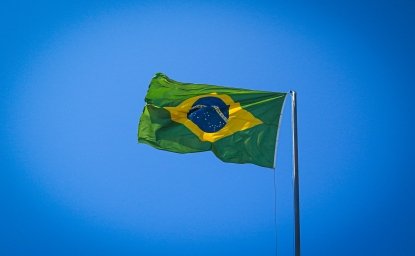The Ukrainian Crisis is at a Point of No Return
"As Russia continues to set the agenda on Ukraine and the West continues to implement the same ineffective strategy, Ukrainians feel increasing abandoned," writes Alina Polyakova.
"As Russia continues to set the agenda on Ukraine and the West continues to implement the same ineffective strategy, Ukrainians feel increasing abandoned," writes Alina Polyakova.
Petro Poroshenko, Ukraine’s embattled president, is looking to make a deal with the enemy. And why wouldn’t he be? In a preemptive move on the eve of the NATO summit in Wales, the Russian president, Vladimir Putin, announced a plan for peace talks in Ukraine. Western leaders, breathing a sigh of relief, expressed a “cautious optimism” for the ceasefire. But the West’s quiet acquiescence to the Russian plan has left Ukrainian leaders with few options.
In the weeks leading up to the NATO summit on September 4, Russia escalated its military invasion of Ukraine.
In late August, Russian armored troops and weapons crossed Ukraine’s southeast border in what Ukrainian officials called a “stealth invasion.” The counteroffensive pushed back the Ukrainian military’s previous gains into separatist controlled territory. Following the offensive, the newly armed and reinforced separatists gained control of a long stretch of Ukraine’s southeast border with Russia, moving the front further south toward the strategic port city of Mariupol. Taking Mariupol would give Russia direct land access to Crimea — the Ukrainian peninsula annexed by Russian forces in March — which Russia has struggled to supply with basic goods and services. NATO estimates that “several thousand” troops and hundreds of combat vehicles are operating in Ukraine. Russia continues to deny involvement.
For their part, Western leaders, including President Barack Obama and the German Chancellor Angela Merkel, have been unwilling to use the “I-word” — invasion — when referring to Russian action in Ukraine. The day before the NATO summit, speaking in Estonia, President Obama made it clear that the United States would not provide military support to Ukraine. Obama’s comments reaffirmed the United States’ commitment to NATO but did little to quell growing fears of Russian aggression among the Baltic States. Formerly Soviet states, the Baltics are now the only EU and NATO members to share long borders with Russia. Estonia and Latvia’s entire eastern border is with Russia. Further south, the Russian exclave of Kaliningrad is strategically wedged between Lithuania and Poland. Seeing a newly awakened Russian bear hungry to restore its former glory, the Baltic States and Poland have not shied away from using the “I-word” to push for a stronger NATO and EU response on Ukraine.
The Baltic States have good reason to fear. Putin’s policy track record in Ukraine is littered with contradictions and broken promises. Putin’s seven point peace plan laid out prior to the NATO summit is no different. But with the West’s unwillingness to change the terms of the game with Russia, Poroshenko has two options: continue a losing military operation that has already claimed over 3,000 lives or negotiate with an untrustworthy enemy.
On Friday, September 5, the Ukrainian president conceded to Putin’s plan and called for a ceasefire of government forces. In a statement, Poroshenko said that his decision to stop the military operation was based on an agreement signed by Russia, separatist leaders, and the Organization for Security and Cooperation in Europe (OSCE). By signing the ceasefire agreement with separatist leaders, Poroshenko has opened the door to negotiations with groups that his own government has consistently referred to as terrorists.
Even this concession may not prove to be enough. As the ceasefire went into effect on Friday morning, Russian troops attacked Ukrainian positions near Mariupol with heavy artillery and missile fire. By Sunday morning, two days after the ceasefire went into effect, the Mariupol city government reported that separatists, backed by Russia, shelled checkpoints near the city in the middle of the night, killing one civilian and injuring three others. This pattern is familiar: in June, Poroshenko ended a ten day ceasefire because separatists had persisted in attacking government troops and civilians.
The West’s “cautious optimism” should have given way to a sobering realism about the ineffectiveness of Western policy toward Russia, but it has not. Rather, EU leaders agreed to institute a fourth round of economic sanctions against Russia. The new measures place modest restrictions on state-owned Russian energy and defense firms and further limit dual-use civilian and military exports but fall short of broader restriction on entire industries or the energy markets. The last and toughest round of sanctions took effect in July. Since then, Russian intervention in Ukraine shifted from a barely covert operation to an overt military campaign with Russian tanks rolling over the Ukrainian border.
If the purpose of the sanctions was to deter Russian aggression, by that measure, they have failed. If the purpose was to show Russia that there are economic consequences for military invasion, then they have failed by that measure as well. So far, the sanctions have not affected the daily lives of most Russians, and Russian public support for Putin’s policy on Ukraine remains high. There are signs that the Russian economy is weakening: the ruble has lost 10 percent of its value since the beginning of the year and the economy is stagnant. The West hopes that in the long-run, the economic pressure will weaken Putin’s resolve in Ukraine. At best, this hope will be partially fulfilled: economic pressures could still shift domestic politics against Putin. At worst, the West’s Pollyanna worldview will give Putin everything he wants: a frozen conflict in eastern Ukraine and the West’s long-term complicity.
As a long-term strategy, sanctions could eventually constrain Russian action. But the Ukrainian crisis requires short- and medium-term solutions, which the West has been reluctant to explore. NATO’s plan to deploy a 4,000-strong rapid reaction force to the Baltic States is a step in the right direction, but it may come too late to influence Russian policy in Ukraine.
Western leaders squandered a key opportunity to take a strong stance against Russia after the Crimean annexation in March. If the NATO force was deployed six months ago, Putin may have thought twice about invading Ukraine. Putin has exploited this tactical mistake masterfully. As Russia continues to set the agenda on Ukraine and the West continues to implement the same ineffective strategy, Ukrainians feel increasing abandoned. The crisis has reached a point of no return, and Poroshenko is left with no options.
The opinions expressed here are solely those of the author.
The article was originally published in The National Interest.

After more than 50 years as a vital part of the Wilson Center legacy, the Kennan Institute has become an independent think tank. You can find the current website for the Kennan Institute at kennaninstitute.org. Please look for future announcements about partnership activities between the Wilson Center and the Kennan Institute at Wilson Center Press Room. The Kennan Institute is the premier US center for advanced research on Eurasia and the oldest and largest regional program at the Woodrow Wilson International Center for Scholars. The Kennan Institute is committed to improving American understanding of Russia, Ukraine, Central Asia, the South Caucasus, and the surrounding region through research and exchange. Read more




